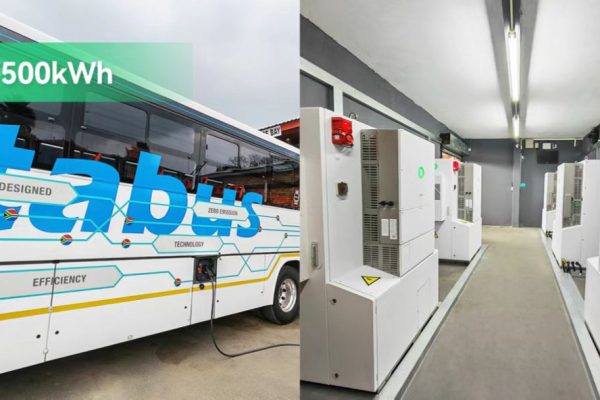What Installers and System Integrators Should Know
As distributed energy systems scale up—especially in the 10kW–100kW range—installers often deploy multiple inverters in one project to handle increasing loads, phased expansions, or different energy sources. But adding more hardware brings one critical challenge: coordination.
That’s where an Energy Management System (EMS) becomes essential.
An EMS is more than a monitoring dashboard—it’s the system brain that manages power flow, balances energy sources, handles load priorities, and keeps all inverters working together. In this post, we explain how EMS coordinates multi-inverter systems, the key benefits it brings, and what you should consider when designing or sourcing such setups.
1. Why Use Multiple Inverters?
Deploying multiple inverters isn’t just about adding power—it’s about scaling intelligently.
Common reasons include:
- Phase balancing: e.g., using 3 × single-phase inverters for a three-phase load.
- Redundancy: avoid full blackout if one unit fails.
- Modularity: add capacity over time without replacing the system.
- Technology mixing: e.g., hybrid + grid-tied inverters in the same site.
- Space constraints: spreading smaller units across multiple rooftops.
But more inverters = more complexity.
2. The Role of EMS in Multi-Inverter Systems
An Energy Management System acts as the command center. It:
- Monitors each inverter’s output, state, and mode
- Coordinates energy flow from solar, battery, and grid
- Schedules battery charging/discharging
- Controls load priorities (critical vs. non-critical)
- Handles grid interaction, export control, and time-of-use logic
Without an EMS, your inverters may work against each other—charging and discharging simultaneously, overloading circuits, or missing grid export limits.
3. Communication is Everything
An EMS must speak to all inverters fluently. That means:
- Communication protocols: RS485, Modbus RTU/TCP, CAN, or proprietary
- Compatible command structures: not just reading data, but sending control commands
- Real-time synchronization: especially critical for systems in island mode
If you’re mixing brands, protocol compatibility is the first thing to check.
✅ Tip: Always ask inverter vendors for their latest Modbus register map or EMS integration guide.
4. Common EMS Functions in Multi-Inverter Deployments
| EMS Function | Description | Why It Matters |
|---|---|---|
| Inverter Prioritization | Select which inverter supplies load first | Optimize wear and load sharing |
| SoC Management | Balance charging/discharging across batteries | Prevent unbalanced pack degradation |
| Grid Export Control | Set export limits per DSO rules | Avoid penalties or disconnection |
| Time-of-Use Optimization | Schedule battery use by tariff windows | Maximize savings in dynamic pricing |
| Blackout Recovery Logic | Decide restart order after outage | Ensure smooth reboot sequence |
| Demand Response Control | Curtail loads or ramp inverters via grid signals | Align with utility incentives |
5. How EMS Handles Specific Multi-Inverter Scenarios
A. Parallel Inverters of the Same Brand
- Most modern hybrid inverters (e.g., 5–15kW models) allow parallel operation.
- EMS may be built-in to one master unit.
- Coordination is simple—just set IDs and connect via RJ45/RS485.
But… don’t assume this works across models or firmware versions.
B. Mixing Hybrid and Grid-Tied Inverters
- EMS must control battery through hybrid, and balance solar export via grid-tied.
- Load shifting must be managed to avoid simultaneous charging and grid export.
Example:
A 30kW rooftop system uses:
- 2 × 10kW grid-tied for daytime solar export
- 1 × 10kW hybrid inverter + 20kWh battery
EMS ensures:
- Daytime: solar > load, excess to grid
- Evening: hybrid discharges battery to supply critical loads
- Night: hybrid charges from grid at off-peak rates
C. Off-Grid or Microgrid Systems
- No grid = no frequency reference.
- EMS must assign frequency leader among inverters.
- It also manages genset start/stop logic, based on battery SoC or load.
Without proper EMS logic, the system may:
- Oscillate in frequency/voltage
- Fail to black-start
- Overload or underutilize inverters
6. What to Ask When Selecting EMS Solutions
If you’re sourcing or recommending EMS hardware/software, consider:
| Question | Why It Matters |
|---|---|
| Is it compatible with our inverter brands and models? | Not all EMS systems are universal. |
| Can it control inverters, or just monitor? | True EMS needs command capability. |
| Is it cloud-based or local? | Cloud is flexible, but some clients need offline control. |
| Can it scale to 5–10 inverters or more? | Some EMS are limited to 1–3 units. |
| Does it support battery SoC balancing logic? | Critical for lithium systems with parallel banks. |
| Is technical support available for integration? | Especially important for field debugging. |
7. EMS vs. BMS: Clarifying Roles
EMS and BMS often confuse non-engineers.
| System | Scope | Main Function |
|---|---|---|
| BMS (Battery Management System) | Battery-level | Cell balancing, safety cutoff, SoC reporting |
| EMS (Energy Management System) | System-level | Load dispatch, inverter control, grid logic |
Think of BMS as the battery’s brain, and EMS as the system’s brain.
8. Future Trends in EMS for Small Projects
- AI-Based EMS: predictive control based on weather forecasts and tariff models
- Plug-and-play compatibility: standard APIs for easier integration
- Mobile-first EMS apps: for prosumers and small business owners
- EMS-as-a-Service: cloud-based EMS platforms sold via monthly license
For technical traders and installers, offering EMS-enabled packages unlocks higher-margin value-added solutions—beyond just box moving.
EMS Is the Key to Scalable, Stable Systems
As solar + storage deployments become more modular and distributed, EMS shifts from “nice-to-have” to mission critical. Whether you’re combining three inverters in a residential mini-grid or 10 units in a rural telecom project, only a coordinated system will operate efficiently and safely.
If you’re involved in procurement, pre-sale support, or post-sale troubleshooting, make EMS understanding a core part of your technical competence—it sets your offering apart in a crowded inverter market.









